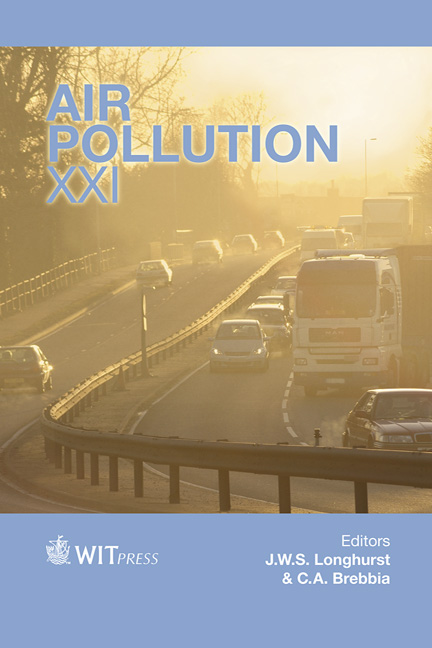Impact Of Motorcycles On Urban Tropospheric Ozone
Price
Free (open access)
Transaction
Volume
174
Pages
12
Page Range
183 - 194
Published
2013
Size
785 kb
Paper DOI
10.2495/AIR130161
Copyright
WIT Press
Author(s)
L. F. A. Garcia, S. M. Corrêa, R. Penteado, L. C. Daemme, L. V. Gatti & D. S. Alvim
Abstract
The increased number of motorcycles in the large Brazilian cities is due to several factors such as traffic, low cost, mobility, few parking lots and low efficiency of public transportation, making it an important factor in air quality deterioration. In this context, vehicle emissions monitoring is essential to understanding the contribution on air pollution. Emissions of two representative motorcycles using gasohol (gasoline with 22% of ethanol) were evaluated on a dynamometer test bench and analyzed by gas chromatography mass spectrometry and on-line analyzers according to the EC/97/24 standard. Emission data obtained in combination with meteorological data and ambient air pollutants for the city of Rio de Janeiro (Brazil) during the winter of 2011, using the trajectory model OZIPR and chemical model SAPRC to assess the impact on the ozone forming potential in the troposphere of Rio de Janeiro city for the next years. The results indicate that ozone levels will exceed the established limits by national legislation within three years. The increase in ozone concentration occurs due to high emissions of reactive volatile organic compounds in an atmosphere with high levels of nitrogen oxides. Given this scenario, additional measures are necessary for the management of emissions from mobile sources. Keywords: atmosphere, modelling, motorcycle, ozone, troposphere, VOC.
Keywords
atmosphere, modelling, motorcycle, ozone, troposphere, VOC





